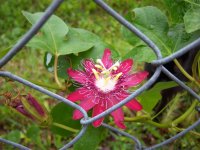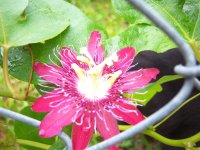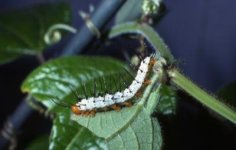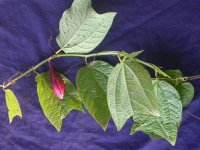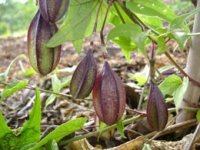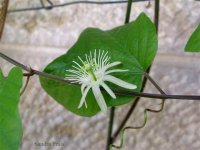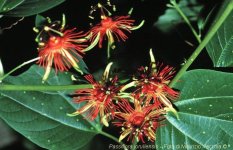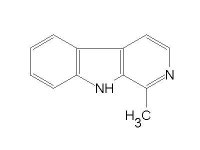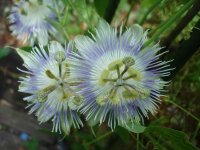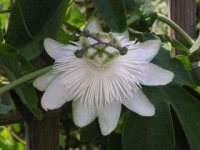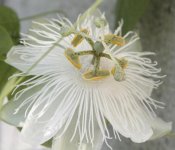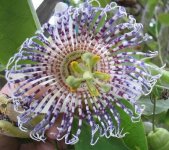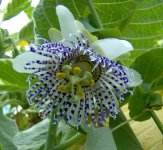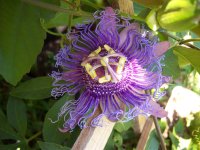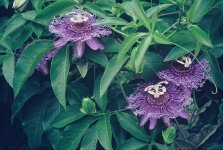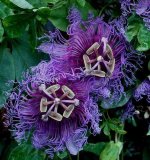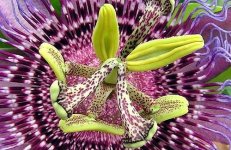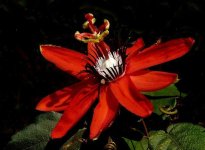-
Members of the previous forum can retrieve their temporary password here, (login and check your PM).
You are using an out of date browser. It may not display this or other websites correctly.
You should upgrade or use an alternative browser.
You should upgrade or use an alternative browser.
Passifloras of Interest..(& MAOI plant Flavonoids)
- Thread starter nen888
- Start date
Migrated topic.
..she's a real beauty.. thanks Melodic Catastrophe..
thanks Melodic Catastrophe..
and seems there's some slight genetic variance within this hybrid strain too..
.
and seems there's some slight genetic variance within this hybrid strain too..
.
nen888 said:..hey jamie, you wrote:..i'm curious as to what kinds of flavonoid rich foods had this effect..berries? certain fruits? this could explain a lot of previously unexplained potentiations of some entheogens..I have experience some weird potentiation a number of of times with vaped DMT and ayahuasca when adding alot of flavanoid rich foods into my diet.
..i'm now finding the list i hastily compiled on p1 here of MAOI Plant Flavonoids, quite handy when looking through phytochemical survey lists..i'm sure this list is by no means complete yet..
.
Lots of herbs I started to drink once I stopped using caffine.. like chammomile, passionflower of course..I eat alot of raw onion..sometimes nearly a whole onion in a salad just for lunch between minxx and I..I think alot of the foods we eat contain quercetin..I get into periods where I will eat alot of durrian as well which contains some harmaline, and lots of tart cherries that contain lots of melatonin etc..alot of the teas I drink and foods I eat will potentiate psychedelics..I have noticed some potentiation of mushrooms with pomegranite juice, but I cant remember what pomegranites contain, some kind of maoi anyway..
I have also noticed some weird effects from dandelions. I have been picking alot of them wild on my hikes along trials and eating the flowers and leaves raw alone and in salads..not sure what is in there that does this, but they do contain scopoletin which is an maoi..I am not sure about flavanoids they might contain..
..thanks jamie, interesting observations..i have for years been interested in dietary interactions with tryptamines/harmalas..
there are certainly many health-freak sites now advocating the benefits of flavonoid-rich diets for, amongst other things, reducing cardiovascular disease likelyhood..
..many plants/herbs contain flavonoids, but in terms of common foods, here's a selection taken from Flavonoids Are the Anti-Inflammatory Antioxidants Your Body Needs — Here's How to Get More | Livestrong.com..
known MAOIs are in itallics..
..and as menioned on p1, Oranges contain the MAOI naringenin, and Strawberries pelargonidin ..
of course, in the amounts present in most examples there wouldn't be noticeable MAO inhibition in ordinary consumed quantities..
but, some herbs and Passifloras in particular may be another story, as some of the species in the thread suggest..
.
there are certainly many health-freak sites now advocating the benefits of flavonoid-rich diets for, amongst other things, reducing cardiovascular disease likelyhood..
..many plants/herbs contain flavonoids, but in terms of common foods, here's a selection taken from Flavonoids Are the Anti-Inflammatory Antioxidants Your Body Needs — Here's How to Get More | Livestrong.com..
known MAOIs are in itallics..
Blueberries and cranberries are known to contain quantities of the flavonol group including quercetin and myricetin. Blackberries and black grapes are high in the flavonoids epicatechin and catechin while raspberries, cherries and red grapes may be high in anthocyanidins and cyanidin...
Bananas contain quantities of anthocyanidins including cyanidin and delphinidin. Citrus fruits including grapefruit, lemons, limes and oranges are high in the flavonone group of flavonoids including hesperetin, naringenin and eriodictyol. Members of the Rosaceae family of tree fruits including apples, pears, plums, peaches and apricots are known to be high in catechin and epicatechin...
Onions, particularly red onions and green onions, are also high in quercetin...
Thyme is high in the flavones luteolin and capers though rarely used are very high in the flavonols kaempferol and quercetin. The best news for some people may be that chocolate is known to be very high in catechins, particularly if consumed in the dark variety.
..and as menioned on p1, Oranges contain the MAOI naringenin, and Strawberries pelargonidin ..
of course, in the amounts present in most examples there wouldn't be noticeable MAO inhibition in ordinary consumed quantities..
but, some herbs and Passifloras in particular may be another story, as some of the species in the thread suggest..
.
^well I have a handful of blueberries and blackberries every morning in my smootheis, as well as 1 or 2 bananas, plus usually 2 more bananas alone by noon..I also make fresh orange juice almost every day from raw organic oranges..tons of onion and for a while I was really into capers in my salads..
We use alot of thyme often as well with oregano, and I have like 20 kilos as leat of raw cacao beans from equador here as well due to a failed raw food business! So I must have the flavanoid thing covered..
Combined with the melatonin tart cherries I eat and the harmala microdoses its no wonder I start to trip randomly in the middle of the night all the time..
We use alot of thyme often as well with oregano, and I have like 20 kilos as leat of raw cacao beans from equador here as well due to a failed raw food business! So I must have the flavanoid thing covered..
Combined with the melatonin tart cherries I eat and the harmala microdoses its no wonder I start to trip randomly in the middle of the night all the time..
^ ..some Passifloras contain up to 2% or more Flavonoids..this would be quite CNS active..i'm not sure of the amounts in Thyme and some other herbs, but it sounds like you've found quite a 'medicine' diet jamie..
..some Passifloras contain up to 2% or more Flavonoids..this would be quite CNS active..i'm not sure of the amounts in Thyme and some other herbs, but it sounds like you've found quite a 'medicine' diet jamie..
..moving back to alkaloids, & keepin the passifloras comin'..
Passiflora capsularis was found to yield the alkaloid harman [Neu 1956] and the cyanogenic glycoside passicapsin..it is native to large parts of South America (incl. Brazil, Columbia, Equador) the Caribbean (incl. Haiti) and Mesoamerica (incl. El Salvador and Nicaragua)..it is a reported emmenagogue [Felter & Lloyd 1983] ('emmenagogues' stimulate blood flow in the pelvic area and uterus and stimulate menstruation..Mugwort is a good one)
also, from a similar region, the much rarer
P. constaricensis based on butterfly tests is, like P. biflora, believed to contain harman, norharman and harmine [Bradley et al. 1988]..it is native to Costa Rica, Nicaragua and Panama
incidentally, the references for a number of species in this thread to Neu [1954, 1956] refer to
R. Neu "Inhaltsstoffe der Passiflora Incarnata" 1,2 & 3 in "Arzneimittel Forschung" vol. 4 & 6..
below P. capsularis, flower, & fruit; then P. constaricensis flower, and a Heliconius butterfly larvae grazing it..
..moving back to alkaloids, & keepin the passifloras comin'..
Passiflora capsularis was found to yield the alkaloid harman [Neu 1956] and the cyanogenic glycoside passicapsin..it is native to large parts of South America (incl. Brazil, Columbia, Equador) the Caribbean (incl. Haiti) and Mesoamerica (incl. El Salvador and Nicaragua)..it is a reported emmenagogue [Felter & Lloyd 1983] ('emmenagogues' stimulate blood flow in the pelvic area and uterus and stimulate menstruation..Mugwort is a good one)
also, from a similar region, the much rarer
P. constaricensis based on butterfly tests is, like P. biflora, believed to contain harman, norharman and harmine [Bradley et al. 1988]..it is native to Costa Rica, Nicaragua and Panama
incidentally, the references for a number of species in this thread to Neu [1954, 1956] refer to
R. Neu "Inhaltsstoffe der Passiflora Incarnata" 1,2 & 3 in "Arzneimittel Forschung" vol. 4 & 6..
below P. capsularis, flower, & fruit; then P. constaricensis flower, and a Heliconius butterfly larvae grazing it..
Attachments
.now here's an interesting sounding alkaloid one..
Passiflora jorullensis, a Mexico native, had Aztec cultivar forms, and was called 'Coanenepilli'..
it was found to contain harmol, harmalol, harman, harmine, harmaline and passicol [J. Lutonski, M. Admaska, M. Jaruzelski Herba Pol. 14 139 [1968]; Chem. Abstr. 71 6564 [1969](cited in de Montellano 1975; see also W. Emboden "Narcotic Plants" 1979)]
..it is used in traditional indigenous medicine as a diaphoretic (causes sweating), diuretic, analgesic and against poisons and snakebite ["Plants in Indigenous Medicine & Diet: Biobehavioral Approaches" by Nina Lilian Etkin 1986]..
BTW, here is a ink to "Empirical Aztec Medicine" by Bernard Oritz de Montellano, Science Vol.188 No.4185 (Apr. 18, 1975)..i'll try to attach pdf sometime..
..P. jorullensis (Mexiico) has a few cultivar varieties based on it..
Passiflora jorullensis, a Mexico native, had Aztec cultivar forms, and was called 'Coanenepilli'..
it was found to contain harmol, harmalol, harman, harmine, harmaline and passicol [J. Lutonski, M. Admaska, M. Jaruzelski Herba Pol. 14 139 [1968]; Chem. Abstr. 71 6564 [1969](cited in de Montellano 1975; see also W. Emboden "Narcotic Plants" 1979)]
..it is used in traditional indigenous medicine as a diaphoretic (causes sweating), diuretic, analgesic and against poisons and snakebite ["Plants in Indigenous Medicine & Diet: Biobehavioral Approaches" by Nina Lilian Etkin 1986]..
BTW, here is a ink to "Empirical Aztec Medicine" by Bernard Oritz de Montellano, Science Vol.188 No.4185 (Apr. 18, 1975)..i'll try to attach pdf sometime..
..P. jorullensis (Mexiico) has a few cultivar varieties based on it..
Attachments
..anyone with a ^ jorullensis out there..?
..a number of passionflowers contain principally Harman (synon. harmane) as the alkaloid..
the Passiflora genus is probably the best and most abundant source of this ß-bcarboline which has only relatively recently been shown to have potent reversible inhibition of MAO-A and B..Harman binding experiments. I: A reversible and selective radioligand for monoamine oxidase subtype A in the CNS of the rat. May T, Rommelspacher H, Pawlik M. 1991
from the abstract:
..Harman was also found in Fagonia cretica (Zygophyllaceae, native to Alicante Province, Spain and the Balearic Islands -aerial parts) by the authors of this paper Structure of Harman- El-Sayed et al. 1986 characterising it's structure...it has been found in Phaseolus vulgaris (Leguminoseae), several Australian Acacias, the African Pauridiantha lyallii (Rubiaceae) as well as in Raisins, and in traces in Tobacco and cannabis smoke..
there has been a false myth in the entheogenic community for years that harman is not very active..
below, the structure of Harman..
..a number of passionflowers contain principally Harman (synon. harmane) as the alkaloid..
the Passiflora genus is probably the best and most abundant source of this ß-bcarboline which has only relatively recently been shown to have potent reversible inhibition of MAO-A and B..Harman binding experiments. I: A reversible and selective radioligand for monoamine oxidase subtype A in the CNS of the rat. May T, Rommelspacher H, Pawlik M. 1991
from the abstract:
.. a chemical supplier says: "Harman... Potent inhibitor of monoamine oxidase A and B (IC50 values are 0.5 and 5 μM respectively)"..Rommelspacher [2002] - found as an inhibtor of MAO-B, "Harman had an IC50-value of approximately 1 μM (competitive interaction)."..this is comparable (slightly stronger infact from my understanding of IC-50 values) to Harmine, of more fame..the paper by Samoylenko et al. [2010] posted by endlessness in this thread www.dmt-nexus.me/forum/default.aspx?g=posts&t=26443 "found Harmaline and harmine showed..inhibitory activity against...(MAO)-A and -B enzymes (IC50 2.5 and 2.0 nM, and 25 and 20 μM)."Harman (1-methyl-beta-carboline) is an endogenous compound with neurotropic properties in rats and humans. In a novel in vitro binding assay, the binding site of [3H]harman has been characterized in the rat crude mitochondrial (P2) fraction. The binding was saturable and reversible.
..Harman was also found in Fagonia cretica (Zygophyllaceae, native to Alicante Province, Spain and the Balearic Islands -aerial parts) by the authors of this paper Structure of Harman- El-Sayed et al. 1986 characterising it's structure...it has been found in Phaseolus vulgaris (Leguminoseae), several Australian Acacias, the African Pauridiantha lyallii (Rubiaceae) as well as in Raisins, and in traces in Tobacco and cannabis smoke..
there has been a false myth in the entheogenic community for years that harman is not very active..
below, the structure of Harman..
Attachments
..and to round off photos of species investigated by Neu 1954,
Passiflora eichleriana (native to Paraguay and Brazil) contained Harman as the main alkaloid..it is widely available from nurseries in the form of hybrids with other species, which would all be of interest, and less commonly in it's true form..
..thanks to all contributors so far, keep those passiflora pics and reports comin' in..
..below are true P. eichleriana,
then P. caerulea 'Constance Eliott' x P. eichleriana
and P. eichleriana var_Mauro Peixoto (which is a hybrid with P. incarnata &/or caerulea)
Passiflora eichleriana (native to Paraguay and Brazil) contained Harman as the main alkaloid..it is widely available from nurseries in the form of hybrids with other species, which would all be of interest, and less commonly in it's true form..
..thanks to all contributors so far, keep those passiflora pics and reports comin' in..
..below are true P. eichleriana,
then P. caerulea 'Constance Eliott' x P. eichleriana
and P. eichleriana var_Mauro Peixoto (which is a hybrid with P. incarnata &/or caerulea)
Attachments
..oh, and i forgot Passiflora actinia..Neu 1954 found harman and maracugine, a bitter principle about which i can still find almost nothing..maracugine is also reported in the similar looking P. alalta, with known sedative/anti depressant use (see p.1) and P. edulis leaf (Sunitha 2009)
P. actinia, native to Brazil, fruit edible..
P. actinia, native to Brazil, fruit edible..
Attachments
from an interesting paper on MAOI flavonoids from the Chinese/asian herb Cayratia japonica (Vitaceae, also native Australia) Han X. H. et al. 2007
.
..so, some of these flavonoids (e.g. apigenin, quercetin) are about as potent MAOIs as Harmine (the higher the IC50 value, the lower the potency)..cool, huh?..Among the isolated compounds, flavones such as apigenin (2) and luteolin (3), as well as the flavonol, quercetin (7) showed potent inhibitory effects against the MAO activity with IC50 values of 6.5, 22.6, and 31.6 microM, respectively. However, the flavone glycosides, apigenin-7-O-beta-D-glucuronopyranoside (1) and luteolin-7-O-beta-D-glucopyranoside (4), showed mild MAO inhibition (IC50 values: 81.7 and 118.6 microM, respectively). The flavanonol derivatives, taxifolin (5) and aromadendrin (6), also showed weak inhibition (IC50 values: 154.7 and 153.1 microM, respectively). Furthermore, quercetin (7) had a more potent inhibitory effect on MAO-A (IC50 value: 2.8 microM) than MAO-B (IC50 value: 90.0 microM). Apigenin (2) and luteolin (3) also preferentially inhibited MAO-A (IC50 values: 1.7 and 4.9 microM, respectively) compared with MAO-B (IC50 values: 12.8 and 59.7 microM, respectively).
.
Hi,
interesting to see that citation for the P. jorullensis alkaloid report. I have the CA (Chemical Abstracts) entry for that and only P. incarnata is mentioned. Allen & Holmstedt's classic review on beta-carbolines in plants (Phytochemistry 19:1573-1582) also lists this reference for P. incarnata, but doesn't mention jorullensis at all. So, either the full article (which I'm still unable to get my hands on) has some brief mention of this buried within a paper which is otherwise all about incarnata (the paper is titled - at least for CA - as "Simple carboline alkaloids. V. Comparitive analysis of the basic components of Passiflora incarnata grown in greenhouses and open fields."), or the citation is wrong.
Re: harman as an MAOI, animal studies might be misleading here as harman has been taken orally by humans at up to 250mg, chased with 35mg DMT, with no activity.
Re: harmaline in durian... can you provide a source for this? I see it is repeated verbatim all over the net, but no one has an actual reference for it, and I've been unable to find one through my usual research means.
interesting to see that citation for the P. jorullensis alkaloid report. I have the CA (Chemical Abstracts) entry for that and only P. incarnata is mentioned. Allen & Holmstedt's classic review on beta-carbolines in plants (Phytochemistry 19:1573-1582) also lists this reference for P. incarnata, but doesn't mention jorullensis at all. So, either the full article (which I'm still unable to get my hands on) has some brief mention of this buried within a paper which is otherwise all about incarnata (the paper is titled - at least for CA - as "Simple carboline alkaloids. V. Comparitive analysis of the basic components of Passiflora incarnata grown in greenhouses and open fields."), or the citation is wrong.
Re: harman as an MAOI, animal studies might be misleading here as harman has been taken orally by humans at up to 250mg, chased with 35mg DMT, with no activity.
Re: harmaline in durian... can you provide a source for this? I see it is repeated verbatim all over the net, but no one has an actual reference for it, and I've been unable to find one through my usual research means.
..interesting..have you got the paper/study?.. - if it's an underground report, the identity of the harman may not be as sound (sourced from where?), depending on where it came from..i've heard this said in the underground, but the bio-med-data contradicts this..repeatably contradicts since 2001 infact, including in-vivo enzyme studies ..wira said:Re: harman as an MAOI, animal studies might be misleading here as harman has been taken orally by humans at up to 250mg, chased with 35mg DMT, with no activity.
(this could be like the 'nmt is inactive' myth)
..err, i didn't know this was stated in this thread..can you point it out..?Re: harmaline in durian... can you provide a source for this? I see it is repeated verbatim all over the net, but no one has an actual reference for it, and I've been unable to find one through my usual research means.
..looks similar, yes indeed Melodic Catastrophe, thanks for posting..
Passiflora cincinnata is native to Boliva, Brazil, Argentina, Columbia, Paraguay, Venezuela..the indigenous Ayoreo people of Paraguay use it medicinally [Economic Botany 48:3]; Juceni et al. 2007 found it had high anti-oxidant activity, and it seems Harman was detected in P. cincinnata by Abourashed, Vanderplank and Khan in "High-Speed Extraction and HPLC Fingerprinting of Medicinal Plants – II. Application to Harman Alkaloids of Genus Passiflora" 2003..if anyone has access to the full paper (?), this would be truly great for passiflora heads..!
..below are the commercial variety P. 'Incense' (P. incarnata x cincinnata),
& then two pics of true P. cincinnata..
Passiflora cincinnata is native to Boliva, Brazil, Argentina, Columbia, Paraguay, Venezuela..the indigenous Ayoreo people of Paraguay use it medicinally [Economic Botany 48:3]; Juceni et al. 2007 found it had high anti-oxidant activity, and it seems Harman was detected in P. cincinnata by Abourashed, Vanderplank and Khan in "High-Speed Extraction and HPLC Fingerprinting of Medicinal Plants – II. Application to Harman Alkaloids of Genus Passiflora" 2003..if anyone has access to the full paper (?), this would be truly great for passiflora heads..!
..below are the commercial variety P. 'Incense' (P. incarnata x cincinnata),
& then two pics of true P. cincinnata..
Attachments
This thread, like your acacia and nmt threads, is fantastic! Thanks for all the work nen, and others who contributed 
By the way, if harman is so strong inhibitor of MAO-b also, then MAOI diets would probably be more recommended with it than with the rue/caapi harmalas?
By the way, if harman is so strong inhibitor of MAO-b also, then MAOI diets would probably be more recommended with it than with the rue/caapi harmalas?
..thanks very much endlessness, and all Passiflora lovers who contributed to the thread..::d
you wrote:
there were two other subjects who did not report possible toxic aftereffects, as i did..they had smaller doses and didn't consume red meat and saigo pudding 6-8hours aftewards, as i did..this was to test it's apparently slightly lingering MAOI effects (light sensitivity, sedateness etc.)
..this resulted, fairly rapidly, in a constricted extreme sore throat type swelling in the mouth and throat glands, followed by bad headache for 1-2 hours..now, red meat is a rich source of tyramine and other potentially nasty amines, as also the seigo-pudding (with palm sugar) may have been..this suggests that Harman IS a very potent inhibitor of both MAO A and B..i think wira's reference to not activating dmt is from Tikhal..in that case, from memory, it is a single second-hand report without detail..
whether the sightly extended duration was due to Harman, or Flavonoid interaction i do not know, but suspect flavonoids have extended effects..and of course different Passiflora's have different flavonoid profiles..
the reason i don't think flavonoids played a role in the heavy MAOI action of this plant is that experience with the known flavonoid rich P. incarnata (harmaline as well) suggests a different kind of psychoactivity (very 'anti-depressant' and colorful)..P. coccinea (which has no reported alkaloids, and is probably flavonoid rich) had a less anti-depressant but colorful effect..neither of these species indicated toxic dietary interactions as did P. subpeltata, though red meat was not consumed with them..
P. incarnata seems to me, and a few other subjects, a relatively smooth and forgiving MAOI plant..
looking forward to hearing more reports on Passiflora caerulea (Blue Passionflower) which i haven't worked with..
below, P. coccinea..
and P. subpeltata (P. alba) in Hawaii..
.
.
you wrote:
..this is an interesting point..to add a little bit more bioassay info to the thread, i admit to being the subject of the P. subpeltata (synon. P. alba) plus dmt experiment reported in Voogelbreinder 2009..P. alba (subpeltata) is reported by Neu to contain Harman as the sole alkaloid..the one experiment successfully orally activated the dmt, though not as pleasantly as P. incarnata (the preferred species) or P. coccinea..By the way, if harman is so strong inhibitor of MAO-b also, then MAOI diets would probably be more recommended with it than with the rue/caapi harmalas?
there were two other subjects who did not report possible toxic aftereffects, as i did..they had smaller doses and didn't consume red meat and saigo pudding 6-8hours aftewards, as i did..this was to test it's apparently slightly lingering MAOI effects (light sensitivity, sedateness etc.)
..this resulted, fairly rapidly, in a constricted extreme sore throat type swelling in the mouth and throat glands, followed by bad headache for 1-2 hours..now, red meat is a rich source of tyramine and other potentially nasty amines, as also the seigo-pudding (with palm sugar) may have been..this suggests that Harman IS a very potent inhibitor of both MAO A and B..i think wira's reference to not activating dmt is from Tikhal..in that case, from memory, it is a single second-hand report without detail..
whether the sightly extended duration was due to Harman, or Flavonoid interaction i do not know, but suspect flavonoids have extended effects..and of course different Passiflora's have different flavonoid profiles..
the reason i don't think flavonoids played a role in the heavy MAOI action of this plant is that experience with the known flavonoid rich P. incarnata (harmaline as well) suggests a different kind of psychoactivity (very 'anti-depressant' and colorful)..P. coccinea (which has no reported alkaloids, and is probably flavonoid rich) had a less anti-depressant but colorful effect..neither of these species indicated toxic dietary interactions as did P. subpeltata, though red meat was not consumed with them..
P. incarnata seems to me, and a few other subjects, a relatively smooth and forgiving MAOI plant..
looking forward to hearing more reports on Passiflora caerulea (Blue Passionflower) which i haven't worked with..
below, P. coccinea..
and P. subpeltata (P. alba) in Hawaii..
.
.
Attachments
The bioassay of harman + DMT was first reported by Ott in Ayahuasca Analogues as a self-experiment.
Sure, harman definitely shows MAOI activity in vitro in various non-human animal organs, but such activity has not been shown in vivo as far as I know. I'm not sure what more recent papers I have on harman; I'll have to dig out the older stuff from my files and find the IC data from those. I don't remember them finding it to be that potent as you report, but I haven't looked at this stuff for a while.
Btw the mention of harmaline in durian was by Jamie in post #63, which is what spurred me on to search around for a source and to find the unreferenced claim recycled on numerous web pages.
Sure, harman definitely shows MAOI activity in vitro in various non-human animal organs, but such activity has not been shown in vivo as far as I know. I'm not sure what more recent papers I have on harman; I'll have to dig out the older stuff from my files and find the IC data from those. I don't remember them finding it to be that potent as you report, but I haven't looked at this stuff for a while.
Btw the mention of harmaline in durian was by Jamie in post #63, which is what spurred me on to search around for a source and to find the unreferenced claim recycled on numerous web pages.
By the way, regarding earlier discussions about the alkaloid levels in P. incarnata. Certainly older studies have reported upper ranges to be fairly decent, but part of the reason for the doubt amongst the medicinal herb community about there being useful alkaloid levels in this species is down to this paper -
Rehwald, A. et al. 1995. “Trace analysis of harman alkaloids in Passiflora incarnata by reversed-phase high performance liquid chromatography.” Phytochemical Analysis 6:96-100.
- which looked at a range of samples and found only tiny traces of alkaloids and brings into doubt much of the older literature. I only recently got this paper, and have accumulated a bunch of more recent papers on Passifloras which I haven't had time to read yet, so I don't know if any later work contradicts Rehwald's results.
Rehwald, A. et al. 1995. “Trace analysis of harman alkaloids in Passiflora incarnata by reversed-phase high performance liquid chromatography.” Phytochemical Analysis 6:96-100.
- which looked at a range of samples and found only tiny traces of alkaloids and brings into doubt much of the older literature. I only recently got this paper, and have accumulated a bunch of more recent papers on Passifloras which I haven't had time to read yet, so I don't know if any later work contradicts Rehwald's results.
Similar threads
- Replies
- 0
- Views
- 135
- Replies
- 0
- Views
- 83
- Replies
- 15
- Views
- 2K

